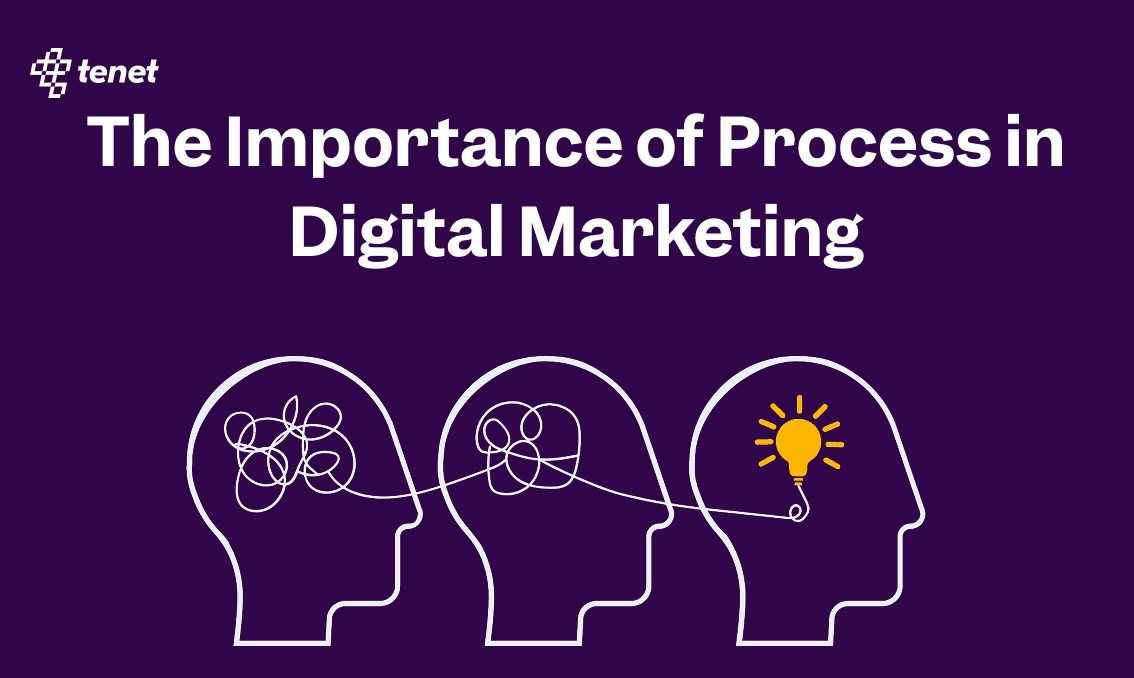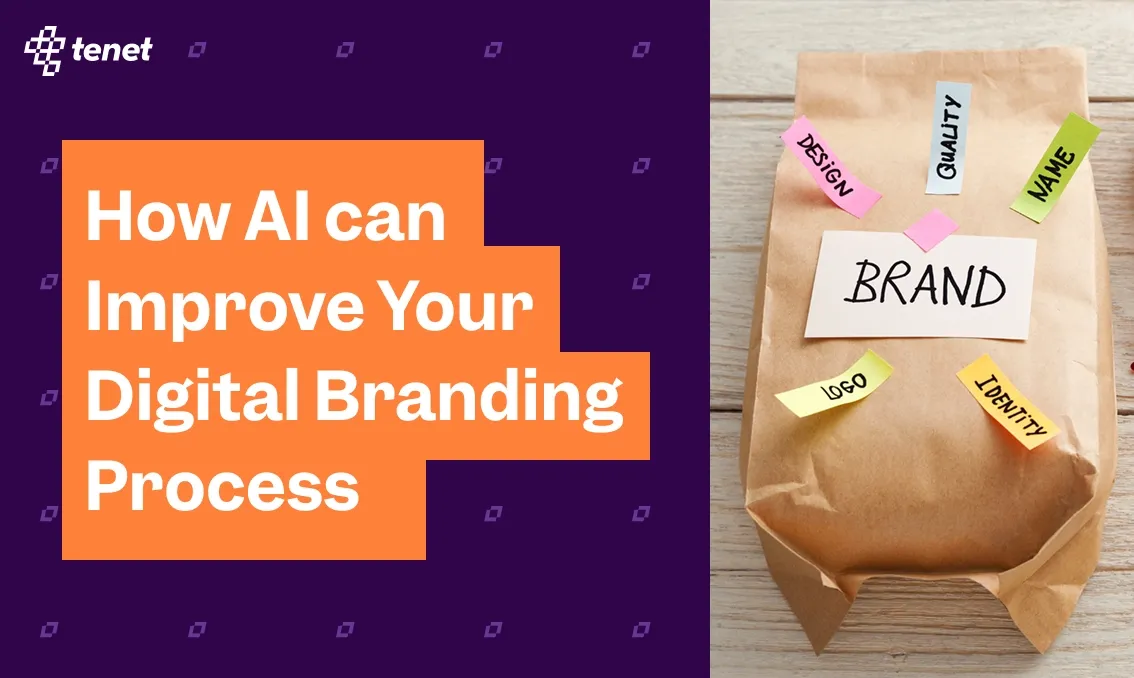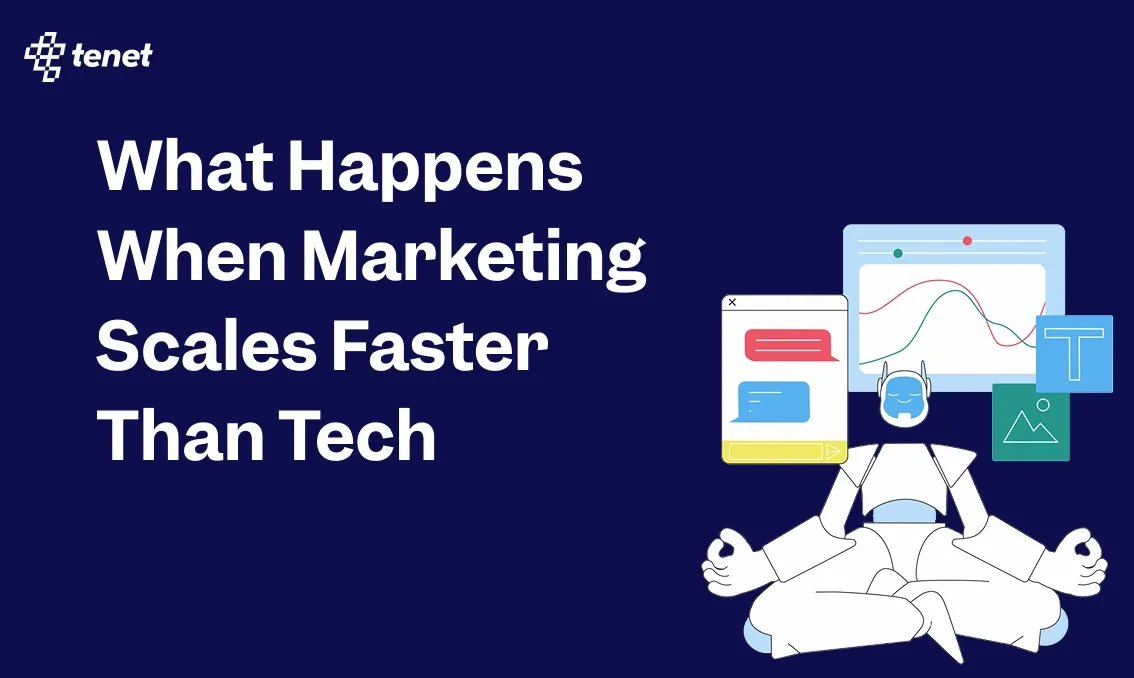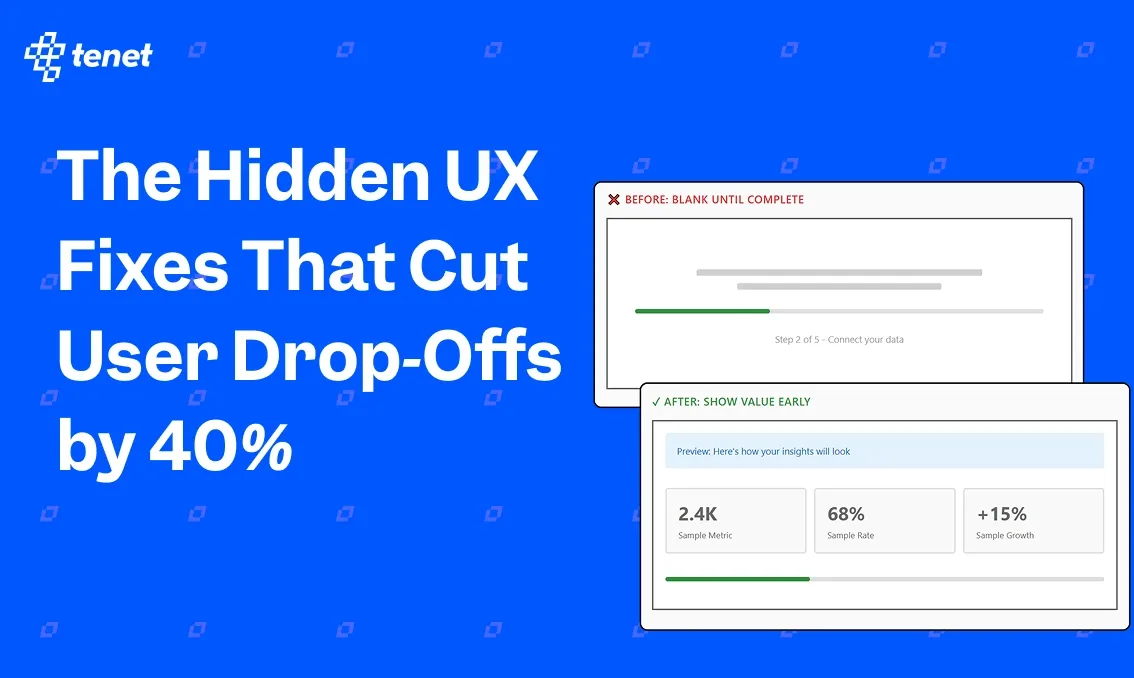The Importance of Process in Digital Marketing
Share
Share

Get a quick blog summary with
Here's what happens in most marketing departments: someone discovers a tactic that works, maybe a specific type of content gets traction, or a particular ad format converts well. The team tries to replicate it. Sometimes it works, sometimes it doesn't. Nobody knows exactly why.
This isn't a talent problem. It's a process problem.
The difference between a marketing operation that plateaus at mediocre results and one that compounds success over time comes down to systematization.
Without documented, repeatable processes, your marketing expertise dies with employee turnover, your wins become flukes you can't replicate, and scaling means proportionally scaling headcount and budget.
Process transforms individual knowledge into organizational capability. It's the infrastructure that lets you turn occasional wins into predictable outcomes.
The Real Cost of Operating Without Process
When you're running Search Engine Optimization (SEO) and Search Engine Advertising (SEA) without systematic processes, you're bleeding efficiency in ways you probably don't measure:
Decision fatigue destroys performance
A marketer managing both SEO and PPC campaigns makes hundreds of micro-decisions daily: which keywords to target, how to respond to ranking fluctuations, which ad copy variations to test, how to allocate budget across campaigns.
Research on decision fatigue shows that decision quality deteriorates as you make more choices. By afternoon, you're making worse calls than you were at 9 AM.
Cognitive overload kills strategic thinking
Your working memory can handle about 4-7 pieces of information simultaneously.
Managing keyword rankings, quality scores, conversion rates, budget pacing, and competitor movements exceeds this capacity.
Knowledge silos create fragility
When your best SEO specialist leaves, they take years of learned patterns with them. Your new hire starts from scratch, repeating mistakes you already paid to learn from.
The financial impact is measurable. Teams without documented processes typically take 8-12 weeks to onboard new members to full productivity.
Process-driven teams cut this to 2-3 weeks. That's 6-9 weeks of productivity you're paying for but not getting.
What an Effective SEO Process Actually Looks Like
When we say process, most people think of a checklist or a routine set of SEO tasks, but wait, it is much more than that.
While strategy defines direction, the process defines discipline. It’s what ensures that every keyword, backlink, and campaign is tracked, refined, and improved over time. The main goal is to build consistency and scalability in how results are achieved.

Let us take a look at what an effective SEO process actually looks like in practice.
Technical SEO Systematization
A technical audit without a clear process often turns into random checks. You might remember to test page speed but forget to verify canonical tags. The outcome depends entirely on who’s doing it.
A process-driven technical audit, on the other hand, follows a clear and repeatable structure:
- Initial Crawl Protocol – Screaming Frog setup, export, severity tagging
- Site Speed Assessment – PageSpeed + WebPageTest, Core Web Vitals review
- Indexation Verification – Index vs intent match, orphan page check
- Structured Data Validation – Schema consistency, Rich Results testing
It’s not about being rigid but reliable. Even junior members can produce expert-level results because the process captures experience. A documented audit saves hours while improving accuracy.
It also saves time. Ad-hoc audits can take 15 to 20 hours. A structured, documented audit covers more ground in just 4 to 6 hours.
Content Production at Scale
Content is one of the major drivers of any digital marketing effort. But as campaigns grow, managing quality, consistency, and timelines becomes challenging. That’s where a systematic content production process makes the difference.
Here’s what content production at scale actually looks like when it’s driven by process.
Step 1 - Keyword Research Protocol
Weekly session using defined search intent categories (informational, commercial, transactional), minimum search volume thresholds (varies by industry), competition assessment using specific metrics (KD score, SERP analysis).
Step 2 - Brief Creation Standards
Use a template that requires: target keyword, search intent, word count range, competitor URLs to outperform, internal linking opportunities, and required sections.
Step 3 - Optimization Checklist
Title tag structure (keyword placement, character limits), meta description requirements, H1/H2/H3 hierarchy rules, keyword density guidelines (not for stuffing—for ensuring coverage), internal link minimums.
Step 4 - Quality Gates
Factual accuracy check using established sources, readability score requirements (Flesch Reading Ease >60 for most B2B), plagiarism scan, brand voice alignment.
Step 5 - Publishing Protocol
URL structure verification, canonical tag check, XML sitemap update, image optimization confirmation (alt text, compression), scheduled social promotion.
Teams implementing this level of systematization typically triple content output without proportionally increasing headcount.
More importantly, performance becomes predictable. You know what you're getting before you publish.
Check out our SEO services that focus on a strategic process to deliver at least 5X ROI on your campaigns.
SEA Process: Where Money Meets Method
Paid search without process means burning budget on preventable mistakes and missing optimization opportunities hiding in plain sight.
Campaign Structure Standards
Account structure directly impacts performance, but most accounts evolve organically into chaos.
Campaigns multiply without naming conventions. Ad groups lack clear themes. Nobody can quickly analyze what's working.
Establish structural rules:
Naming Conventions - Campaign level includes channel, objective, and geo (e.g., "Search-Lead_Gen-US").
Ad group level specified theme (e.g., "KW-Enterprise_Software"). This enables programmatic analysis and automated reporting.
Segmentation Decision Criteria - Define when to use Single Keyword Ad Groups versus themed groups based on search volume and strategic importance.
High-value keywords with sufficient volume get their own ad groups for granular control.
Settings Checklist - Every new campaign goes through mandatory verification: location targeting confirmed, ad schedule set if needed, device bid adjustments applied, negative keyword lists attached, conversion tracking verified.
Bid Management Systems
Even when using automated bidding strategies, strategic oversight requires systematization. Below are some of the major things you need to follow:
Weekly Review Protocol
Segment keywords into performance quartiles based on conversion rate and CPA. Only make changes to keywords with statistical significance (100+ clicks is a reasonable minimum threshold).
- For underperformers: Check search term reports for irrelevant traffic, review ad copy relevance, verify landing page alignment. Don't immediately pause- diagnose first.
- For strong performers: Identify budget constraints, test bid increases to capture more impression share, look for expansion opportunities (adding close variants or related keywords).
Budget Reallocation Process:
Calculate cost per conversion by campaign weekly. Shift budget from campaigns >20% above target CPA to campaigns <20% below target, but never move more than 15% of budget in a single week to avoid disruption.
Document every significant change with rationale. Three months later, you'll have data showing which types of optimizations actually worked.
The Testing Framework That Drives Continuous Improvement
Test Design Requirements
Each test must have a documented hypothesis. "I think emotional benefit headlines will outperform feature headlines because our target audience responds to outcome-focused messaging" is testable. "Let's try something different" isn't.
Run tests to statistical significance. For most accounts, this means 1,000+ impressions and 95% confidence level. Stopping tests early because something "looks good" leads to false conclusions.
Asset Performance Analysis
For Responsive Search Ads, analyze Google's asset performance ratings weekly. Replace "Poor" performing headlines after they've had adequate exposure (typically 2,000+ impressions). Document why you're replacing them and what pattern you're testing.
Build an asset library. When a headline pattern works in one campaign, test variations in related campaigns. This cross-pollination multiplies the value of each winning test.
Process as the Foundation of General Growth Strategy
Most growth strategies fail at execution, not conception. Leadership identifies opportunities to expand into new markets, launch new product lines, increase customer lifetime value but implementation stalls because the operational foundation can't support it.
Process is what transforms growth strategy from PowerPoint to reality.
The Growth Process Framework
Effective growth strategy requires three levels of process integration:
Strategic Planning Process - Quarterly growth planning sessions with documented inputs (market analysis, competitive intelligence, performance data), decision frameworks for prioritizing initiatives, resource allocation models, and success metrics definition.
Cross-Channel Orchestration Process - SEO and SEA can't operate in isolation if you're serious about growth.
Build processes for keyword intelligence sharing (paid search validates demand before organic investment), budget flexibility (shift resources between channels based on performance), and unified customer journey mapping.
A systematic approach to channel integration typically increases overall marketing ROI by 25-40% compared to siloed optimization.
Growth Experimentation Protocol - Most companies say they want to "test and learn" but lack the structure to do it effectively.
Establish a growth experimentation process: hypothesis documentation, minimum viable test definition, success criteria, resource allocation caps (never bet everything on unproven tactics), learning capture, and scaling protocols for winners.
Real-World Application: Process-Driven Geographic Expansion
A SaaS company wanted to expand from the US market into the UK, Germany, and France simultaneously.
Their initial approach was to treat each market as a separate project—custom keyword research, unique campaign structures, market-specific content strategies.
After the UK launch consumed three months and produced mediocre results, they systematized their market entry process:
Market Research Template - Standardized competitive analysis (top 10 competitors, their keyword focus, estimated traffic, pricing positioning), search demand validation (minimum search volume thresholds for market viability), and localization requirements assessment.
Launch Sequence Protocol - Phase 1 focused on high-intent transactional keywords via PPC for immediate market testing (2-week sprint).
Phase 2 expanded to mid-funnel content based on conversion data from Phase 1 (4-week sprint).
Phase 3 built a comprehensive organic presence targeting validated opportunities (ongoing). This staged approach reduced upfront investment and risk.
Localization Workflow - Translation process with native speaker review, cultural adaptation checklist (examples, case studies, imagery), technical implementation verification (hreflang tags, local hosting considerations), and local search engine optimization beyond just Google.
Performance Monitoring Dashboard - Market-specific metrics tracked weekly (cost per acquisition by geo, organic visibility by market, conversion rate variances), with predefined thresholds triggering strategy adjustments.
Results: Germany and France launches took 4 weeks each (vs. 12 weeks for the unstructured UK launch). Combined performance across new markets exceeded projections by 40% because learnings from each market informed the next. More critically, the documented process became a repeatable asset for future expansion.
Data-Backed Performance
A B2B SaaS company structured its PPC testing process and reduced cost per acquisition by 47% within six months. They introduced a fixed testing calendar with four ad copy tests per campaign every month, documented hypotheses, and tracked performance.
Testing frequency increased from 3 to 20 tests a month, building a knowledge base that revealed emotional-benefit headlines performed three times better than feature-based ones. This data-driven insight shaped future ad creatives.
If we talk about another example, an e-commerce retailer documented its content production process and grew organic traffic by 312% in a year. With defined keyword research steps, brief templates, quality checkpoints, and feedback loops, each article improved the next.
Across industries, mature processes consistently lead to stronger performance outcomes.
Building Your Process Without Creating Bureaucracy
The best you can do is start with the pain points. Find where things repeatedly break, where work gets delayed, or where output quality depends on the person handling it.
Once you see the real friction points, document the simplest process that fixes them. Keep it lean.
A one-page checklist that people actually use is far more valuable than a 50-page manual no one opens. When your team follows a lightweight, effective process, you eliminate confusion without creating bureaucracy.
The Bottom Line
Process is what makes two companies with the same tools, budget, and people perform at completely different levels.
Without it, teams waste time fixing avoidable mistakes and chasing results that never stabilize. With it, you build structure, transfer knowledge, and create consistent outcomes.
Sit with your core team, identify one area that needs order, and document the steps clearly. Train everyone to follow it, review the results, and refine as you grow. Make sure every campaign and task connects back to a defined process. That’s how you scale faster, reduce chaos, and deliver better results with the same team size.
Expertise Delivered Straight to Your Inbox
Expertise Delivered Straight to Your Inbox

Got an idea on your mind?
We’d love to hear about your brand, your visions, current challenges, even if you’re not sure what your next step is.
Let’s talk












